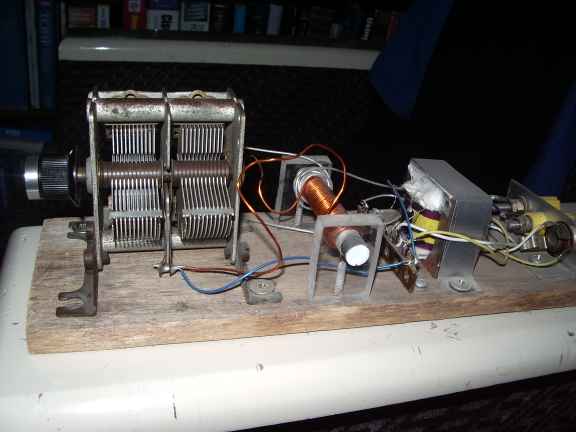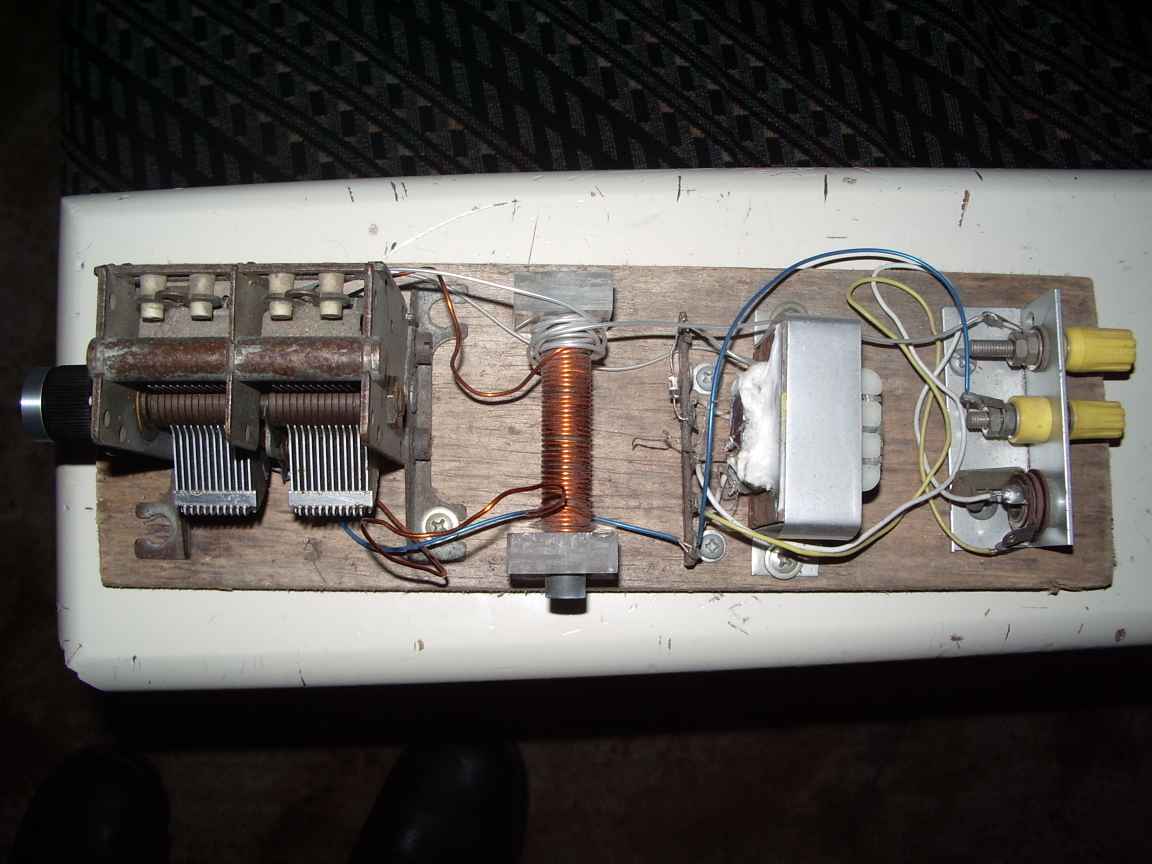Yet another crystal set am broadcast band radio
ralph klimek 2001
Why do I or the world need yet another crystal-set design ?
This
little project was motivated by me wanting to show the kids some cool
technology. A radio that required no batteries or no source of external
power, save that so generously provided by the advertisers of
commercial AM broadcast stations. I revived for me rather nice memories
of when I was very young trying to coax the last bit of performance
from my earliest radios. It was allways a tradeoff between loudness and
selectivity. In Melbourne Australia this really only meant being
able to discriminate between the government stations at 620 and 770 khz
which ran a 50KW transmitter and the more numerous commercial stations
between 800 and 1600Khz any only running only 5KW. The meant in
practice, being only able to resolve the big government radio and the
commercials were reduced to a cacophony all trampling on each
other. In those days nearly all the commercials carried horse racing or
football on the weekends and this made for amusing listening. Often
they would all call the same horse race and you could make out 5
stations at once blabbling out the same race call.
The
classic crystal set design that is still taught to kids requires
a coil of high inductance, chosen to resonate with what was the
standard broadcast gang of 415pF max.
This
is actually a rather poor choice. It means a poor Q at the low
end and allmost NO Q at the high end, which is why here in Melbourne
the commercials could not be discriminated. That meant the
"cool" stuff, the pop music and shock jocks could not be heard by me.
So I acquired a taste for govenment news and solid classical
music. I remember falling asleep while listening to the Week in
Business or the haunting sounds of "In Choirs and Places" (radio 3AR)
just before nightly close down with one of those horrible crystal
earpieces (I called them "infecto-phones") making my ear very
sore. But it was worth it because one of those shows in the sixties was
the inspiring ABC Weekly Science Report which would lead me on to better
things.
So this silly
little project caused me to revisit the concept of Q and bandwidth and
resonance. The classical crystal set performance was ruined by poor
understanding of Q. The classical crystal set inductor has high
inductance, presumeably to resonate with a cheap low maximum value
variable capacitor. High inductance is not a bad thing if that
coil has low resistance, but at RF that is hard to do.
This
radio's resonator has very small inductance and very high capacitance.
Performance is not limited by the inductors resistance but only by the
loading. The load is nothing more that the losses in the antenna
and the rectifier. The diode is ,off course, germanium. It
feeds a step down transformer, not of audio design, but a mains
frequency plug pack transformer which drives high impedance (600ohm)
voice coil headphones. Any cheap ones will do. The coil should be
wound with the heaviest gauge wire to hand, the ferrite core is
optional, it serves merely to shorten the length of wire required and
to make the coil size practical. Allthough not done here, the
coil should be tapped half way to provide for 2 octaves of tuning. The
large tuning capacitance effectively absorbs the capacitance of the
antenna.
Now
in practice, with an antenna that consists of nothing more than a 10
meter long heavy gauge wire running along the back fence, less than 3
meters above the ground and a good earth, this radio can resolve all of
Melbournes' stations with minimal interference. The really suprising
thing, it is possible to drive a large diameter loud speaker with this
radio. I wouldnt call it loud, but rather, call it noticeable. At
late night it could even be described as objectionable!
...and someone else is paying for the power!
 |  |
| old broadcast gang parrelled to give 900pF Max | Inductor has about 30 to 40 turns of 16 gauge wire |
homepage




